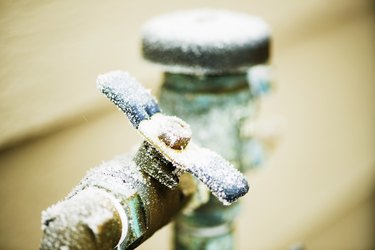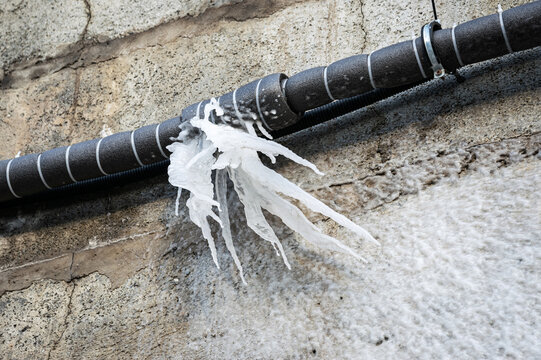The article directly below on the subject of How to prepare your home plumbing for winter weather is totally stimulating. Check it out yourself and see what you think of it.

Cold weather can wreak havoc on your plumbing, particularly by freezing pipes. Here's how to stop it from taking place and what to do if it does.
Intro
As temperature levels decrease, the risk of frozen pipelines boosts, potentially resulting in costly repairs and water damages. Comprehending just how to prevent frozen pipes is important for house owners in cool environments.
Recognizing Icy Pipelines
What creates pipelines to ice up?
Pipelines freeze when subjected to temperatures below 32 ° F (0 ° C) for extended periods. As water inside the pipelines ices up, it broadens, putting pressure on the pipe wall surfaces and possibly triggering them to burst.
Dangers and damages
Frozen pipelines can bring about supply of water disruptions, residential or commercial property damage, and expensive repairs. Ruptured pipelines can flooding homes and create considerable structural damage.
Signs of Frozen Pipeline
Recognizing icy pipelines early can prevent them from bursting.
How to identify icy pipelines
Seek lowered water circulation from taps, unusual odors or noises from pipelines, and visible frost on subjected pipes.
Avoidance Tips
Shielding vulnerable pipelines
Wrap pipelines in insulation sleeves or make use of warmth tape to protect them from freezing temperature levels. Concentrate on pipes in unheated or exterior areas of the home.
Heating methods
Maintain indoor rooms sufficiently heated up, particularly areas with plumbing. Open cabinet doors to allow cozy air to flow around pipelines under sinks.
Securing Outside Plumbing
Garden hoses and exterior faucets
Separate and drain garden hoses before wintertime. Set up frost-proof faucets or cover outdoor taps with insulated caps.
What to Do If Your Pipelines Freeze
Immediate activities to take
If you believe icy pipelines, maintain taps available to eliminate stress as the ice melts. Use a hairdryer or towels taken in hot water to thaw pipes slowly.
Long-Term Solutions
Structural changes
Think about rerouting pipes away from exterior wall surfaces or unheated locations. Include additional insulation to attic rooms, basements, and crawl spaces.
Upgrading insulation
Invest in top quality insulation for pipes, attic rooms, and wall surfaces. Appropriate insulation helps preserve consistent temperatures and decreases the risk of icy pipes.
Conclusion
Preventing frozen pipes requires positive measures and fast reactions. By recognizing the reasons, signs, and preventive measures, house owners can shield their pipes during winter.
6 Proven Ways to Prevent Frozen Pipes and Protect Your Home
Disconnect and Drain Garden Hoses
Before winter arrives, start by disconnecting your garden hoses and draining any remaining water. Close the shut-off valves that supply outdoor hose bibs and leave the outdoor faucet open to allow any residual water to drain. For extra protection, consider using faucet covers throughout the colder months. It’s also important to drain water from any sprinkler supply lines following the manufacturer’s directions.
Insulate Exposed Pipes
Insulating your pipes is an effective way to prevent freezing. Pipe insulation is readily available at home improvement stores and is relatively inexpensive. Pay close attention to pipes in unheated areas such as the attic, basement, crawl spaces, or garage. Apply foam insulation generously to create a buffer against the cold. You can also wrap your pipes in heat tape or thermostat-controlled heat cables for added warmth.
Seal Air Leaks
Inspect your home for any cracks or openings that could let in cold air. Seal any holes around the piping in interior or exterior walls, as well as the sill plates where your home rests on its foundation. Additionally, make sure to keep your garage door closed unless you’re entering or exiting. Leaving it open creates a significant air leak that can lead to frozen pipes.
Allow Warm Air Circulation
During cold snaps, it’s essential to allow warm air to circulate evenly throughout your home. Leave interior doors ajar to promote better airflow. Open kitchen and bathroom cabinets to help distribute heat consistently around the rooms. If you have small children or pets, be sure to remove any household chemicals or potentially harmful cleaners from open cabinets for safety.
Let Faucets Drip
A small trickle of water can make a big difference in preventing ice formation inside your pipes. When temperatures drop significantly, start a drip of water from all faucets served by exposed pipes. This continuous flow helps prevent the water from freezing. Additionally, running a few faucets slightly can relieve pressure inside the pipes, reducing the chances of a rupture if the water inside does freeze.
https://choateshvac.com/6-proven-ways-to-prevent-frozen-pipes-and-protect-your-home/

I was made aware of that editorial about Preventing and dealing with frozen pipes through an acquaintance on another web address. Are you aware of somebody who is in the market for 6 Ways to Prevent Frozen Pipes? Do not hesitate to promote it. Thank you for your time spent reading it.
Schedule Your Service